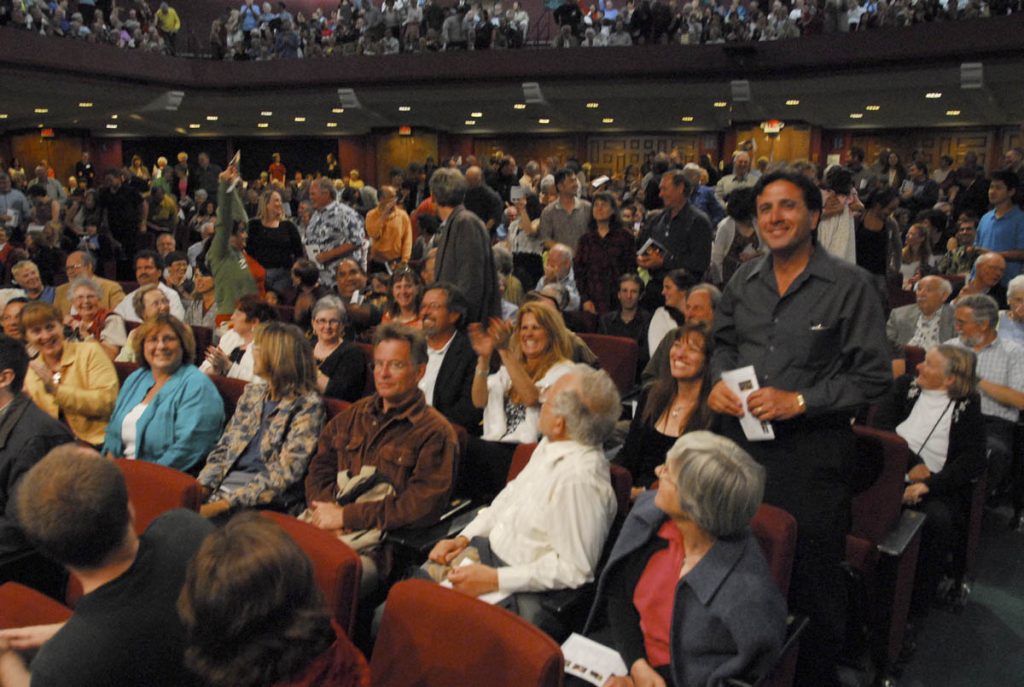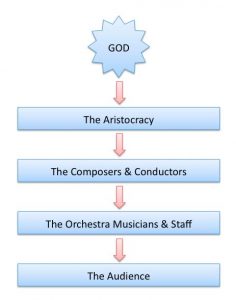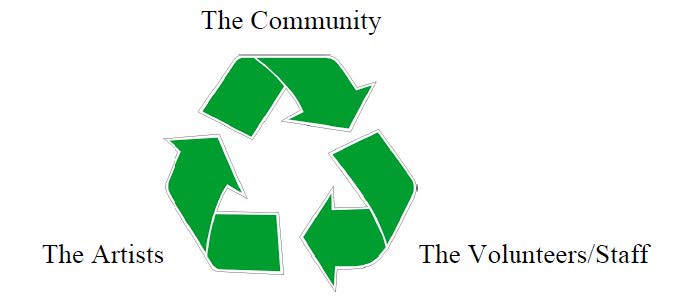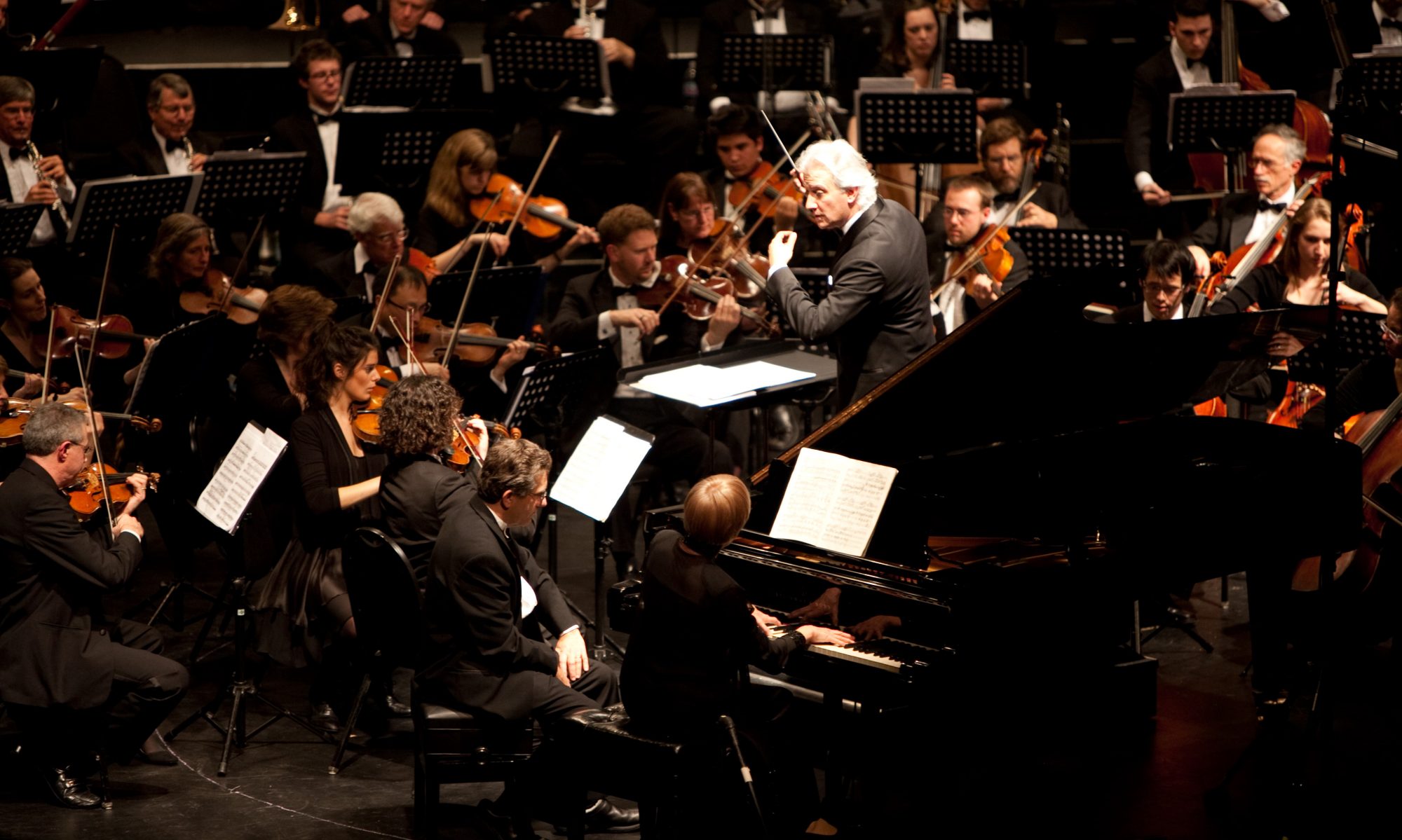
We musical artists can make the beauty of music come alive for everyone who participates with us. The labor we perform can give access to the most transcendent aspects of human nature. This purpose would seem to be a worthy, high value calling – providing food for the heart, mind, and soul. Why then is it so hard to be a professional musician in the United States in the 21stcentury?
Consider that we in the performing arts world live inside a pervasive worldview that shapes what is possible for us to think, to do, and to become. Like water is to a fish, or air is to a bird, we are embedded in a “way it is” that is transparent to us but shapes everything about how we run our orchestras and our lives. To fulfill the mission of art in our lives and the lives of those we serve, we need to become conscious of the invisible lines of force that shape our perceptions, beliefs, and choices. Being aware of the unseen framework will enable us to choose a different and more effective one. Consider the following notion.
Our orchestras and the way we operate them come from the European aristocratic model of society. In that model, the aristocracy controls the land, the resources, and the capital. The authority of the aristocracy proceeds directly from God, and through them down into the hierarchy of society. Wishing to have the benefits of art in their life, they grant resources to a chosen few managers who then hire workers to produce the art product, in the case of orchestras, musical compositions and performances. These performances are given at court for an exclusive group including the aristocrat, his or her friends and family, and others deemed “in favor at court.” Here is an illustration of that aristocratic orchestra business model.

The implications of this way of working together are far reaching. In an aristocracy, power flows from above to below. Gaining access to power (resources and opportunities) is a function of your relationship to those in power. If you are “in favor at court” those in power will give you what you need. If you fall out of favor, your resources and opportunities disappear. The criteria for being in favor are completely arbitrary and are based on the whims and fancies of the aristocrat in question. Those who are particularly talented at manipulating the aristocracy, remain in favor even if the actual value they provide is objectively small or nil. A certain Machiavellian talent is necessary to succeed in this system, requiring skill at pretense, diplomacy, posturing, and the willingness to compromise one’s own integrity to gain access to power. To thrive in this system, one must know one’s place and not upset the hierarchy or challenge the status quo.
This is the way of the world in many places and has been since agriculture was invented. It requires for its continuance that a few people control what many others need. It is founded on the fear of authority and driven by the need for survival. The people who thrive in this system are not the same kind of people whose purpose it is to make beauty, truth, and goodness available to others through producing art in service to humankind. This paradigm is the root source of the almost universal discontent among performing artists and the staff that support them.
Thankfully, there has been a global shift of consciousness in the last two decades that is making a new worldview available to us. With the rise of democracy in the 18th century, the Western cultures began a slow transformation away from the traditional aristocratic framework. Through the 1990’s in the U.S., our concert music institutions all still operated inside the old model. Now, in the 21st century, with the blending of world cultures, when digital music distribution and desktop music production technology have democratized the creation and dissemination of music, the aristocracy of money and influence that ruled orchestras, schools of music, and the recording business has lost its last competitive advantage. The existing system is slowly breaking down. The exclusive access that the musical and social aristocracy had is disappearing or all but gone.
The Renaissance 2.0 Model
For several years now, the League of American Orchestras has convened numerous conferences with the purpose of inventing a way forward for American orchestras. Everyone is clear that the way we’ve been doing things is no longer working. What is not clear is what to do next.
Here is a proposal that has been tried and perfected over 13 years in Sonoma County, California with the community formerly known as the American Philharmonic – Sonoma County. It works.
In every orchestra, there are three constituencies;
- The Artists that make the music,
- The Volunteers and Staff that enable the music making, and
- The Community of music lovers that share the experience and from which comes the resources and capital to fund the organization.

Each of these constituencies participates with the orchestra for its own reasons. Each group has different but complementary values and cares that must be served for them to continue to participate. All three constituencies must consistently receive tangible, emotional, mental, spiritual, and social value from their interactions with the organization for it to be self-sustaining and healthy. Like a three legged stool, one constituency is not more important than the others. All are required for the whole to function. To get the value wanted, each group must enable the success and partnership of the other groups.
This interdependent new model is an ecology of shared value rather than a hierarchical value chain driven from the top. It more accurately reflects the current state of our democratized and interconnected world where people have many more choices, opportunities, and freedoms than in our cultural past. It requires mutual respect and shared purpose to work.
In the new framework, the purpose of an orchestra organization is to make the beauty of music and the goodness of community alive and available for everyone who wants to participate. The job of the leaders of the three constituencies is to create the conditions that enable each of the three groups to get what they came for. The leadership can do this by fostering mutual respect and mature partnership between the constituencies, and by creating an inspiring vision and shared purpose for the organization. Without real vision, integrity, leadership skill, and sincere commitment to interdependent partnership, the tripartite system will fail. Self-serving narcissists cannot thrive in the new environment. Leaders authentically in service to the community are required for the new model to work.
For every person in the orchestra community to experience ownership and responsibility for the whole and their own experience of value in participating, a democratically balanced system of governance must be implemented. This is necessary because any concentration of power and control with one group will destabilize the whole and make the organization vulnerable to an individual “star” taking over the agenda.
A detailed orchestral business model utilizing this Big Insight has been developed by the author and has been tested in part with American Philharmonic – Sonoma County. A complete implementation of the model will be used in American Philharmonic’s new project – The Bay Area Young Professionals’ Orchestra. BAYPO will be launched in 2019 pending completion of seed funding.

